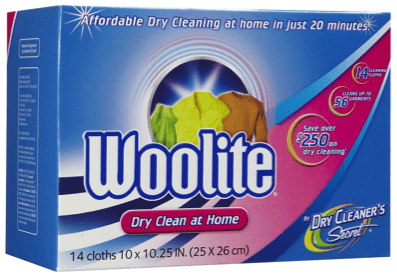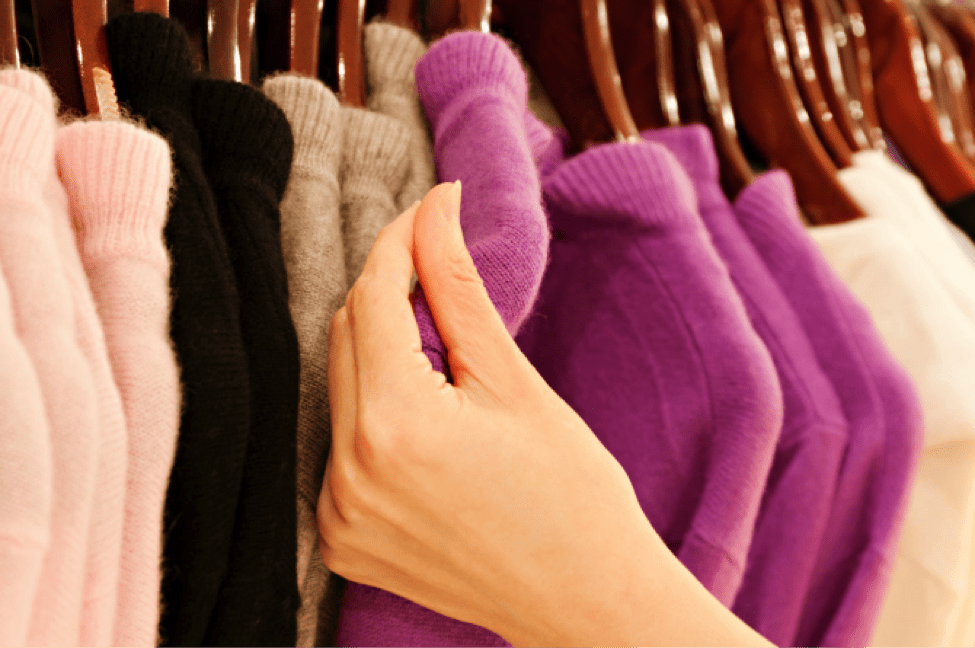Have you ever wondered why that polyester and cotton dress was labeled dry clean only? The fabric looked exactly like that other skirt you have washed successfully many times. There are several reasons why dry-cleaning is recommended by manufacturers, but in my experience, some of them are slightly suspect. Some retailers label their items as dry clean only to preempt damage (and possible returns) caused by mishandling or by rough treatment in the washing machine.


Items that require dry cleaning are fabrics and articles that would be damaged by being submerged in water. These include suede, velvet, rayon, delicate silk or wool blends, as well as men’s ties, intricately detailed articles like pleated skirts and sequined tops or garments with lining and interfacing.
However there are several drawbacks to dry cleaning:
- It can get expensive very quickly if you have a large variety of dry clean items
- The chemical, Perchloroethylene (known as perc) used as a solvent to oil, grease, and dirt, impregnates the fabric, stripping and reducing the life of the fibers
- Perc is toxic to humans and the environment.
There are dry cleaning kits available in the laundry aisle at most supermarkets and drugstores.
 According to experts, these kits are great for refreshing clothes, removing wrinkles, and tend to work well on water-based stains like milk or wine. They were less effective on oil-based stains and ink, and can set these types of stains during the “cleaning” process if they were not treated properly beforehand, making it nearly impossible for the professionals to remove.
According to experts, these kits are great for refreshing clothes, removing wrinkles, and tend to work well on water-based stains like milk or wine. They were less effective on oil-based stains and ink, and can set these types of stains during the “cleaning” process if they were not treated properly beforehand, making it nearly impossible for the professionals to remove.
Faced with environmental, quality and cost issues to dry cleaning it would be wise to find alternatives and dry clean as little as possible. If you want your wool suits to last, once a season is enough for heavy wear, once a year for very light wear.
Tips to Prolong the Life of Your Non-Washable Suits
- Look for environmentally friendly dry cleaners, which use pressurized CO2 instead of solvents to clean non-washable items.
- Brush your clothing with a microfiber cloth or soft brush. Surprisingly effective, these tools will extract surface and even deeper dust and grime.
- Spot clean your wrinkled or lightly soiled clothing then use a normal setting garment steamer; or run the delicates in the dryer with a damp washcloth. Both of these methods have been reported to kill the bacteria.
- Spot clean your stains with 1liter water and 1Tsb of hydrogen peroxide. Use a Q-tip on delicates.
- Never use perfumed paper, soap or perfumed sachets to line shelves or hang in wardrobes. The perfume actually attracts the moths and insects
Tips to Wash Garments at Home
- If possible, unlined polyester should always be washed, never dry-cleaned.
- Wool knits can be hand washed successfully in a gentle liquid soap.
- To wash underwear use an 80/20% water/hydrogen peroxide solution and gently rub the dark marks with a soft toothbrush.
- To detox wool, cashmere or silk from moth eggs, extract the air from a garment bag and freeze for 12-24 hours. This also works for dirty soft toys.
- To clean perspiration marks and other stains, mix 1Tbs of baking soda and 1 Tbs of cheap shampoo. Make a paste and leave on the stain of 15 minutes. Rinse with a white vinegar and water solution.

An alternative method to wash polyester, wool and silk
- 1 liter of cold water
- 1-2 Tbs of white vinegar
- ¾ Tbs cheap shampoo
Gently press the flat garment into the water solution for 15 minutes
Rinse flat in cold water and vinegar
To extract some water, roll in a towel but don’t wring
Lay flat to dry on a net or drying rack, not a coarse towel, and out of the direct sunlight.

Knowing this information will not only help you make your wardrobe last longer, but you can use this information when shopping for new items based on your preferred laundry habits.
Contact London Image Institute at (404) 255-0009 to learn more about our image consultancy courses.



